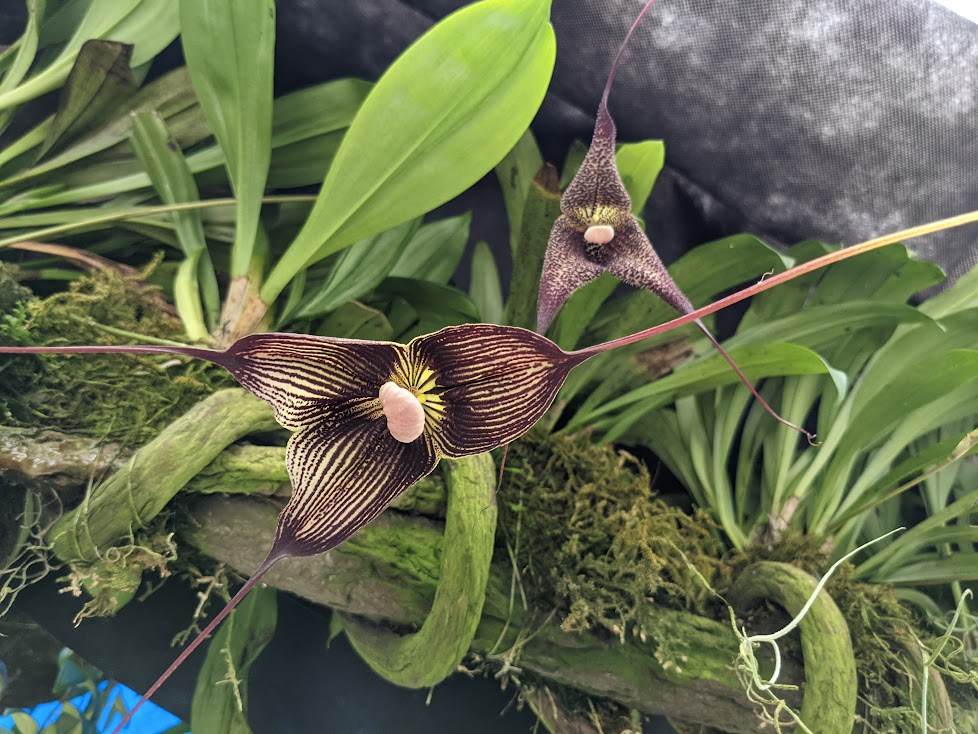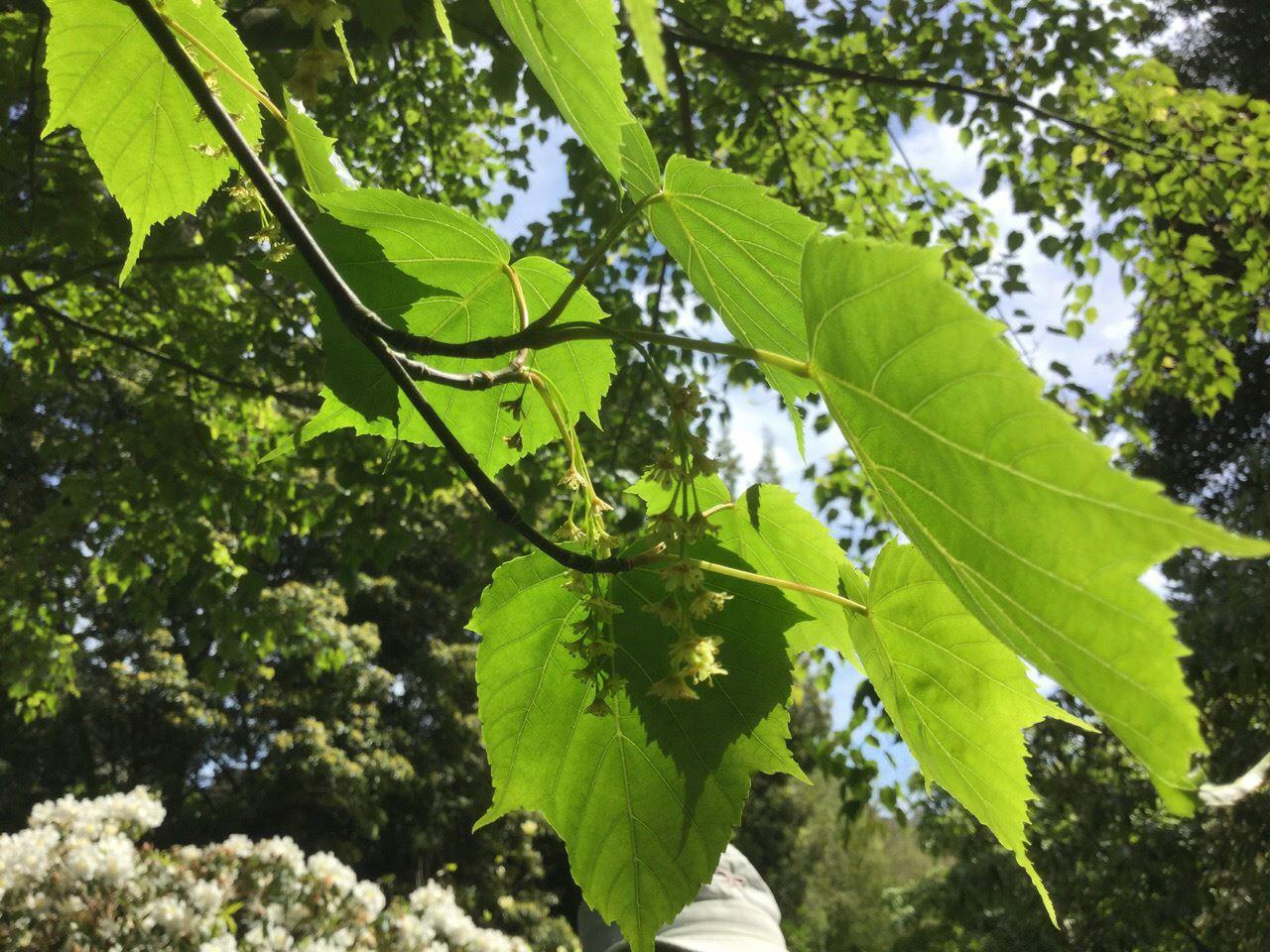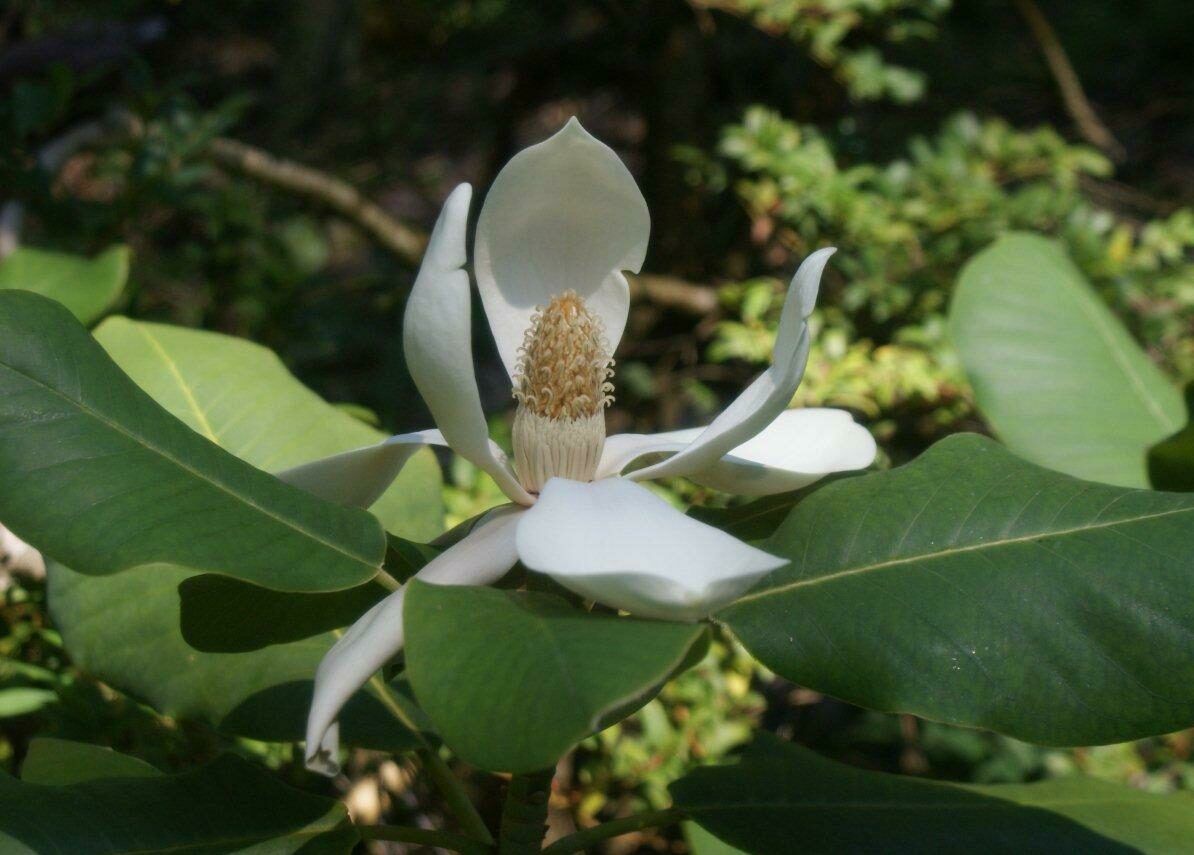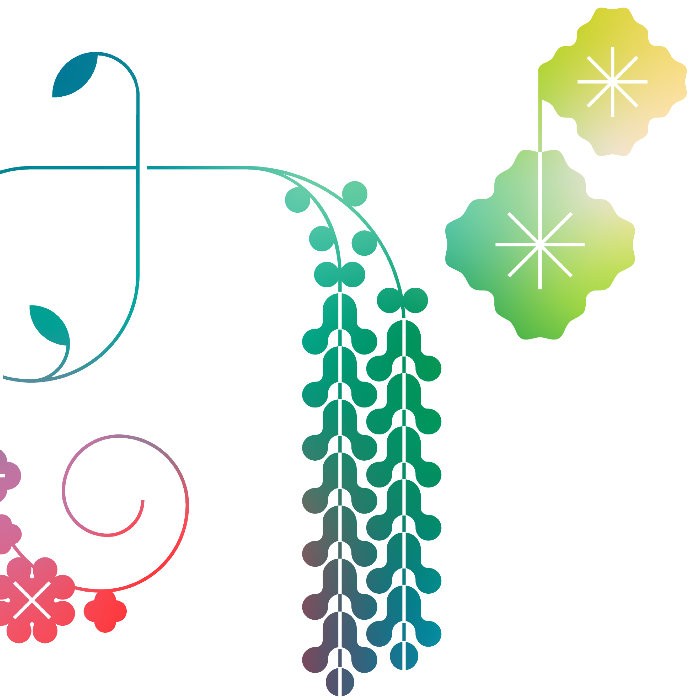
Curator’s Corner – Dracula spp.
No, that’s not a monkey’s face you’re looking at! It’s simply Dracula simia, an orchid whose column, petals, and labellum (a large, modified petal) strongly resemble the visage of our distant primate cousins.
Profile
Scientific name: Dracula spp.
Family: Orchidaceae
Environment: Cool to intermediate temperatures with damp, humid conditions
Typically, long sepals with “tails” growing from the tips (varies by species)
Uses: Ornamental
Though Halloween is still many months away, it’s never a bad time to talk about one of the Conservatory’s spookiest, and most captivating, plants! While the magnolias are blooming over at the Botanical Garden, visitors at the Conservatory will be treated to the blossoms of the orchid genus Dracula. To see these orchids for yourself, simply take a stroll through the Highland Tropics Gallery and look up at the canopy of vines and branches above. If you do, there’s a good chance you’ll spot one of these little epiphytic orchids staring right back at you. No, that’s not a monkey’s face you’re looking at! It’s simply Dracula simia, an orchid whose column, petals, and labellum (a large, modified petal) strongly resemble the visage of our distant primate cousins.
The genus Dracula represents over 100 species, with a natural habitat ranging from Mexico down to Peru. Over half of the genus is endemic to either Ecuador or Colombia! Though the genus name brings to mind Bram Stoker’s infamous vampiric count, it actually comes from Latin meaning little dragon and was named in reference to the appearance of the flowers. However, that hasn’t stopped some taxonomists from leaning into the word’s more gothic allusions. For example, found with Dracula simia in the Highland Tropics Gallery is Dracula vampira, an orchid that differentiates itself with distinct black sepals. Like many orchid species around the world, both Dracula simia and Dracula vampira are threatened in the wild due to habitat loss and illegal wildlife trade.

The genus Dracula represents over 100 species, with a natural habitat ranging from Mexico down to Peru.
As evidenced by Dracula simia, many species of Dracula bear a shocking resemblance to the facial features of monkeys. However, this is purely coincidental. Botanists have theorized that it isn’t monkeys, but mushrooms, that these orchids are mimicking. This fungal appearance serves to attract the common fungus gnat and other mycophagous flying insects. These insects will mistake a Dracula orchid for fungus and attempt to lay eggs on the flower. In doing so, these insects end up becoming inadvertent little pollinators.
Given the size of the genus, there is a fair amount of diversity in the appearance of the various species. However, there are some features to look out for if you want to spot them at the Conservatory. The Dracula orchids in the Highland Tropics Gallery are epiphytes, so they will be growing atop branches or vines. From there, look for flowers with sepals that diverge into three distinct points. The tips of these sepals should have long, whisker-like appendages growing from them. Don’t be nervous about getting up close to observe the beautiful, intricate structures of these orchids. Despite their name, these orchids don’t bite!
Text by Ethan Rappeport, photos by Sarah Sawtelle




